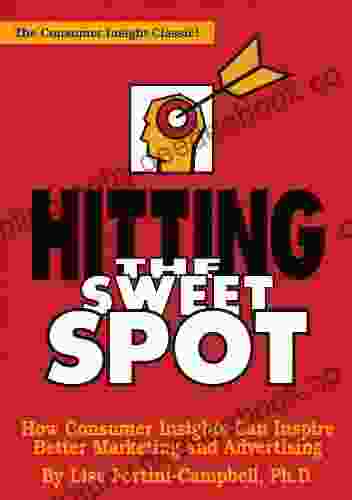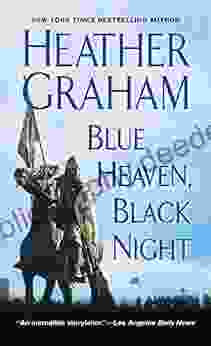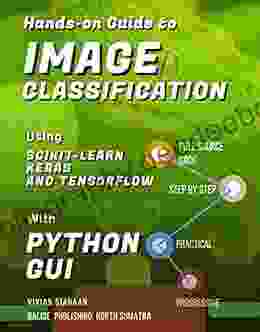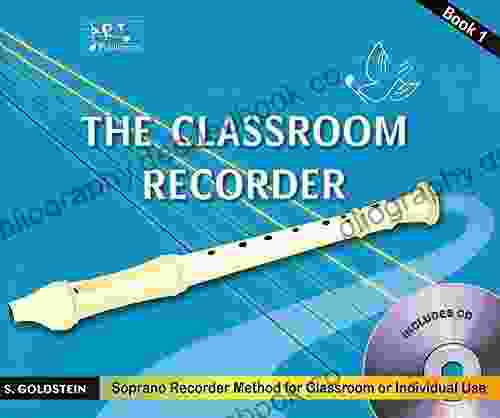A Comprehensive Guide to Image Classification Using Scikit-Learn, Keras, and TensorFlow

Image classification is a fundamental problem in computer vision that involves assigning a label to an image based on its content. It has a wide range of applications, including object recognition, scene understanding, face recognition, medical imaging, and more.
In this guide, you will learn how to build an image classification model using Scikit-Learn, Keras, and TensorFlow. We will cover the following topics:
- Fundamentals of Image ClassificationHands-On Guide To IMAGE CLASSIFICATION Using Scikit-Learn, Keras, And TensorFlow with PYTHON GUIby Sophy Henn
5 out of 5
Language : English File size : 11359 KB Text-to-Speech : Enabled Enhanced typesetting : Enabled Print length : 205 pages Screen Reader : Supported Mass Market Paperback : 138 pages Item Weight : 5.1 ounces Dimensions : 5 x 0.32 x 8 inches - Common tasks and applications
- Challenges in image classification
- Building an Image Classification Model
- Data preparation
- Model training
- Model evaluation
- Model deployment
Image classification is a supervised machine learning task. This means that we have a dataset of labeled images, and we use this dataset to train a model that can predict the labels of new images.
The most common image classification tasks are:
- Binary classification: This involves classifying images into two classes, such as "cat" and "dog".
- Multi-class classification: This involves classifying images into more than two classes, such as "cat", "dog", "horse", and "cow".
- Object detection: This involves detecting and classifying objects within an image.
- Scene understanding: This involves understanding the content of an image, such as the location, time of day, and weather conditions.
Image classification has a wide range of applications, including:
- Object recognition: Identifying objects in images, such as cars, people, and animals.
- Scene understanding: Understanding the content of an image, such as the location, time of day, and weather conditions.
- Face recognition: Identifying people in images.
- Medical imaging: Detecting and classifying diseases in medical images.
- Remote sensing: Classifying land cover types from satellite images.
There are a number of challenges involved in image classification, including:
- Noise and clutter: Images can contain a lot of noise and clutter, which can make it difficult to identify the objects of interest.
- Lighting and shadows: The lighting and shadows in an image can affect the appearance of objects, which can make it difficult to classify them correctly.
- Occlusion: Objects in an image can be occluded by other objects, which can make it difficult to see them.
- Scale and rotation: Objects in an image can vary in scale and rotation, which can make it difficult to classify them correctly.
In this section, we will walk through the steps of building an image classification model using Scikit-Learn, Keras, and TensorFlow.
Data Preparation
The first step is to prepare the data. This involves resizing the images to a consistent size, converting them to a suitable format, and normalizing the pixel values.
Model Training
Once the data is prepared, we can start training the model. We will use Keras to build our model, and TensorFlow to train it.
The following code snippet shows how to train an image classification model using Keras and TensorFlow:
python model = Sequential([ Conv2D(32, (3, 3),activation='relu', input_shape=(28, 28, 1)),MaxPooling2D((2, 2)),Conv2D(64, (3, 3),activation='relu'),MaxPooling2D((2, 2)),Flatten(),Dense(128, activation='relu'),Dense(10, activation='softmax') ])
model.compile(optimizer='adam', loss='sparse_categorical_crossentropy', metrics=['accuracy'])
model.fit(x_train, y_train, epochs=10)
Model Evaluation
Once the model is trained, we need to evaluate its performance. We will use the accuracy metric to evaluate the model's performance.
The following code snippet shows how to evaluate an image classification model using Scikit-Learn:
python score = model.evaluate(x_test, y_test, verbose=0) print('Test loss:', score[0]) print('Test accuracy:', score[1])
Model Deployment
Once the model is evaluated, we can deploy it to a production environment. We will use Tensorflow Serving to deploy the model.
The following code snippet shows how to deploy an image classification model using Tensorflow Serving:
python
Create a SavedModel
model.save('saved_model')
Start a Tensorflow Serving server
serve
In this guide, you learned how to build an image classification model using Scikit-Learn, Keras, and TensorFlow. We covered the fundamentals of image classification, the steps of building an image classification model, and the challenges involved in image classification.
I encourage you to practice the steps outlined in this guide and build your own image classification models. With practice, you will be able to build powerful models that can solve a variety of problems.
5 out of 5
| Language | : | English |
| File size | : | 11359 KB |
| Text-to-Speech | : | Enabled |
| Enhanced typesetting | : | Enabled |
| Print length | : | 205 pages |
| Screen Reader | : | Supported |
| Mass Market Paperback | : | 138 pages |
| Item Weight | : | 5.1 ounces |
| Dimensions | : | 5 x 0.32 x 8 inches |
Do you want to contribute by writing guest posts on this blog?
Please contact us and send us a resume of previous articles that you have written.
 Book
Book Page
Page Chapter
Chapter Text
Text Genre
Genre Reader
Reader Paperback
Paperback Newspaper
Newspaper Bookmark
Bookmark Glossary
Glossary Bibliography
Bibliography Synopsis
Synopsis Annotation
Annotation Codex
Codex Classics
Classics Library card
Library card Biography
Biography Memoir
Memoir Reference
Reference Dictionary
Dictionary Thesaurus
Thesaurus Narrator
Narrator Character
Character Resolution
Resolution Librarian
Librarian Catalog
Catalog Stacks
Stacks Archives
Archives Study
Study Reserve
Reserve Academic
Academic Journals
Journals Rare Books
Rare Books Special Collections
Special Collections Thesis
Thesis Dissertation
Dissertation Storytelling
Storytelling Awards
Awards Reading List
Reading List Textbooks
Textbooks Ernesto Spinelli
Ernesto Spinelli Quintin Jardine
Quintin Jardine Susan Elkin
Susan Elkin Cara Wall
Cara Wall Tim Sample
Tim Sample John Izod
John Izod Hazel Cutly
Hazel Cutly The History Hour
The History Hour Kyounghoon Lee
Kyounghoon Lee Steven Vinacour
Steven Vinacour H J Marshall
H J Marshall John Dodson
John Dodson Scarlett Se Leva
Scarlett Se Leva Joshua Kjerulf Dubrow
Joshua Kjerulf Dubrow Ann B Ross
Ann B Ross Prateek Joshi
Prateek Joshi David Mora
David Mora Ashley M Biggers
Ashley M Biggers Richard Gott
Richard Gott Robert W Witkin
Robert W Witkin
Light bulbAdvertise smarter! Our strategic ad space ensures maximum exposure. Reserve your spot today!

 David PetersonHitting The Sweet Spot: How Consumer Insights Can Inspire Better Marketing...
David PetersonHitting The Sweet Spot: How Consumer Insights Can Inspire Better Marketing... Jonathan FranzenFollow ·7.7k
Jonathan FranzenFollow ·7.7k Derek BellFollow ·16.3k
Derek BellFollow ·16.3k Ian PowellFollow ·16.7k
Ian PowellFollow ·16.7k Blake BellFollow ·12.1k
Blake BellFollow ·12.1k Marcus BellFollow ·13.5k
Marcus BellFollow ·13.5k Kelly BlairFollow ·7.4k
Kelly BlairFollow ·7.4k Truman CapoteFollow ·4.8k
Truman CapoteFollow ·4.8k Kenneth ParkerFollow ·2.3k
Kenneth ParkerFollow ·2.3k

 Braden Ward
Braden WardFeminism's Forgotten Fight: The Ongoing Battle for...
The feminist movement has historically...

 Julio Cortázar
Julio CortázarBlue Heaven Black Night: A Literary Journey Through Love,...
In the realm of...

 Eddie Bell
Eddie BellA Journey Through Time: Exploring the Enchanting World of...
The vibrant tapestry of New...

 Lawrence Bell
Lawrence BellValiance Dragon Soul Press Anthology: A Literary Odyssey...
Step into a realm where...

 Aron Cox
Aron CoxEmbark on a Creative Odyssey with Jean Leinhauser's "101...
Unveil a Kaleidoscope of...
5 out of 5
| Language | : | English |
| File size | : | 11359 KB |
| Text-to-Speech | : | Enabled |
| Enhanced typesetting | : | Enabled |
| Print length | : | 205 pages |
| Screen Reader | : | Supported |
| Mass Market Paperback | : | 138 pages |
| Item Weight | : | 5.1 ounces |
| Dimensions | : | 5 x 0.32 x 8 inches |












